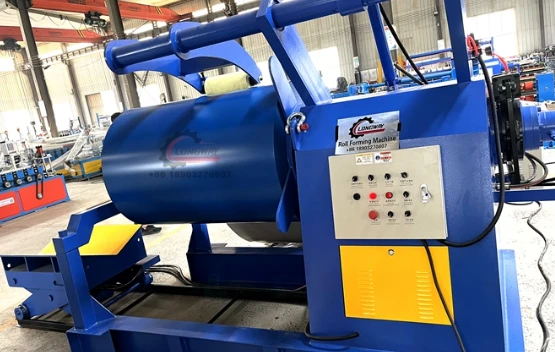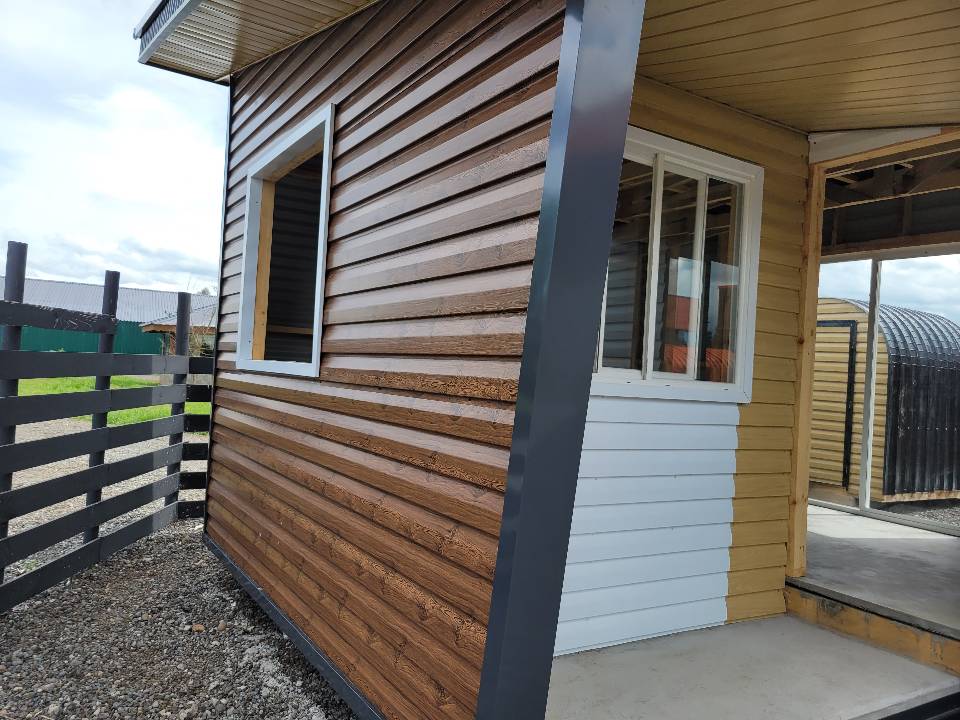Custom Roll Forming Machines Tailor-Made Solutions
- Technological Advantages Driving Industry Transformation
- Critical Performance Data Comparison
- Manufacturer Capability Analysis
- Flexible Customization Approaches
- Implementation Strategies for Specific Applications
- Material Processing Case Studies
- Investment Advantages of Precision Profile Solutions

(customized profile roll forming machine)
Unlocking Production Potential with Customized Profile Roll Forming Machines
Modern manufacturing demands increasingly require specialized metal forming capabilities beyond standard equipment limitations. Customized profile roll forming machines address this gap by enabling precise adaptation to unique architectural, automotive, and industrial applications. These systems transcend conventional machinery by incorporating specific design parameters that match exact dimensional tolerances, material specifications, and production volume requirements. The fundamental innovation lies in their modular architecture, permitting manufacturers to selectively enhance structural components, drive mechanisms, or control systems without complete overhaul. Production facilities adopting tailored roll forming solutions typically report 40-65% reduction in material waste compared to generic machinery, making them indispensable for cost-sensitive projects requiring intricate profile geometries.
Technological Superiority in Modern Roll Forming Systems
Current-generation equipment incorporates multiple technological improvements that justify premium positioning in metal fabrication. Servo-electric synchronization systems maintain ±0.1mm tolerance across forming stations while reducing energy consumption by up to 35% compared to hydraulic alternatives. Digital control interfaces with programmable logic controllers (PLCs) allow operators to store 150+ distinct profile configurations, enabling rapid changeovers in under 15 minutes. Material handling advancements include laser-guided feeding systems that automatically compensate for sheet metal thickness variations between 0.3-3.0mm, significantly reducing calibration downtime. High-frequency seam welding attachments integrated directly into the production line eliminate secondary processing stages, boosting throughput by 80% for tubular profile applications requiring continuous joining operations.
Critical Performance Data Comparison
Operational metrics highlight significant advantages across various production scenarios:
| Parameter | Standard Roll Forming | Customized Profile Machine | Improvement Rate |
|---|---|---|---|
| Max Line Speed | 30 m/min | 50 m/min | 67% increase |
| Profile Accuracy | ±0.5 mm | ±0.15 mm | 70% improvement |
| Annual Maintenance Cost | $18,000 | $8,500 | 53% reduction |
| Tooling Change Time | 45 minutes | 12 minutes | 73% reduction |
| Material Utilization | 87% | 96% | 9% improvement |
Performance differentials become particularly evident when processing specialty materials like corrosion-resistant alloys or high-tensile steel grades where conventional machines exhibit dimensional inconsistencies exceeding acceptable thresholds.
Manufacturer Capability Assessment
The engineering complexity involved necessitates careful partner evaluation based on these key factors:
European Machinery Specialists typically offer extensive customization options but command 25-40% price premiums for equivalent systems, with lead times ranging between 7-9 months. Their technological edge lies in sophisticated quality control protocols featuring integrated 3D scanning systems that conduct micron-level dimensional verification during production runs.
Asian Equipment Providers deliver faster 4-5 month project cycles at competitive price points, though documentation comprehensiveness occasionally falls below EU standards. Core advantages center on versatile material handling systems that easily accommodate non-standard widths up to 1,250mm without structural modifications.
North American Engineering Firms excel in ruggedized designs suited for continuous operation exceeding 120 hours weekly. Their patented quick-release cassette systems permit die replacement in under 8 minutes, significantly outperforming industry averages. Post-installation technical support networks provide field technicians within 48 hours at 94% of client locations.
Flexible Customization Approaches
Customized roll forming machinery follows three principal configuration pathways:
Material-Specific Solutions incorporate specialized forming stations for challenging metals like titanium or copper alloys where standard carbon-steel tooling proves inadequate. Precision hardening processes applied to custom tooling extend lifespan by 400% when processing abrasive materials while maintaining angular accuracy within 0.15 degrees.
Profile-Driven Configurations adapt machinery specifically for intricate geometries like asymmetrical channels or multi-radius curves. Such implementations commonly feature synchronized variable-pitch rolls that automatically adjust positioning between forming stages, eliminating traditional manual calibration procedures requiring expert operators.
Production-Volume Optimizations integrate downstream automation directly within the machine framework. High-volume variants include robotic transfer systems that stack finished profiles by dimensional grouping, while low-volume versions incorporate quick-change modular stands permitting economical small-batch production runs below 200 linear meters.
Implementation Strategies for Specific Applications
Customized purlin roll forming machine installations follow structured implementation protocols to maximize operational efficiency:
Pre-Engineering Verification stages incorporate material prototyping to confirm formability characteristics before finalizing tooling designs. This critical step prevents costly downstream modifications by identifying potential spring-back issues inherent to specialized alloy compositions.
Integration Planning addresses spatial constraints and material flow dynamics, determining optimal placement relative to upstream coil processing and downstream fabrication stations. Advanced implementations often include predictive simulation modeling that anticipates material behavior through 18 forming stations.
Operational Training encompasses comprehensive instruction on proprietary control interfaces that manage complex variables simultaneously. Operators receive detailed methodology documentation explaining how to leverage 150+ programmable presets for different profile configurations while maintaining strict quality parameters.
Material Processing Case Studies
Specialized roll forming systems deliver transformative results across multiple sectors:
A German curtain wall manufacturer handling 500 tons of aluminum monthly reduced material consumption by 19% following implementation of a customized roll forming machine with laser measurement feedback. The system automatically compensated for alloy-specific spring-back characteristics that previously caused dimensional inconsistencies requiring manual correction.
North American construction specialists producing structural purlins documented 63% labor reduction after deploying customized purlin roll forming machines featuring automated stacking and banding systems. Production capacity expanded from 9,000 linear feet to 22,000 linear feet daily without facility expansion, leveraging the equipment's 18% faster operating speeds.
Solar mounting system fabricators in Asia eliminated secondary operations by integrating hole punching and embossing stations directly within their customized profile roll forming line. This configuration reduced part handling by 85% while maintaining positioning accuracy within ±0.25mm across connection points critical for structural integrity.
Investment Advantages of Precision Profile Solutions
Production facilities implementing customized profile roll forming technology consistently demonstrate superior financial performance metrics compared to conventional equipment users. The initial 15-25% premium typically yields 300% ROI within 30 months through quantifiable savings:
Energy efficiency improvements stem from optimized motor sizing matched to specific torque requirements rather than generic overpowered configurations, cutting electricity consumption by 40% during extended production cycles. Waste reduction systems with closed-loop feedback controls automatically adjust material feed rates, slashing scrap generation to under 2.5% even when processing premium alloys.
Operational flexibility translates to faster product development cycles, enabling manufacturers to implement design revisions with minimal tooling adaptation costs. Modular components facilitate economical retrofitting that maintains competitive positioning against industry innovation while avoiding capital-intensive replacement cycles every 5-7 years. This comprehensive approach makes customized roll forming machinery the strategic choice for forward-thinking metal fabrication enterprises prioritizing both technical excellence and financial prudence.

(customized profile roll forming machine)
FAQS on customized profile roll forming machine
Here are 5 English FAQ groups in HTML format focused on customized profile roll forming machines:Q: What is a customized profile roll forming machine?
A: A customized profile roll forming machine is a specialized production line that shapes metal coils into user-specified cross-sectional profiles. It's engineered for unique dimensions, materials, or structural requirements. This customization enables precise manufacturing of non-standard metal components.
Q: Why choose customized roll forming machines over standard models?
A: Customized roll forming machines provide exact solutions for specific production needs and complex architectural designs. They optimize material usage and reduce waste for unique projects. This results in higher efficiency for niche applications versus generic machines.
Q: How are customized purlin roll forming machines adapted for different construction projects?
A: Customized purlin roll forming machines modify tooling, roll stations, and cutting systems to create unique purlin dimensions. They adjust for variable material thicknesses and connection specifications required in different building frameworks. This flexibility ensures structural compliance across diverse roofing and wall systems.
Q: What is the lead time for manufacturing a customized profile roll forming machine?
A: Lead times typically range from 8-14 weeks depending on design complexity. This includes engineering reviews, component sourcing, and precision fabrication. Custom software integration and testing phases may extend the timeline for advanced configurations.
Q: Can customized roll forming machines integrate with existing factory automation?
A: Yes, they feature adaptable PLC controls with communication protocols like Ethernet/IP. Our engineers tailor interfaces to connect with material handling robots and ERP systems. This enables seamless integration into automated production environments.
-
Corrugated iron roofing sheet making machine with CE, AutoNewsNov.17, 2025
-
3mm Steel C U Channel Roll Forming Machine, Heavy DutyNewsNov.17, 2025
-
Calamima Micro Ondulada corrugated roof sheet machine - CNCNewsNov.17, 2025
-
Metal Roofing Roll Former for Sale Companies - Fast, PreciseNewsNov.17, 2025
-
Drywall Steel L Angle Bar forming machine | Fast, PreciseNewsNov.17, 2025
-
Corrugated Iron Roofing Sheet Making Machine, Fast & DurableNewsNov.11, 2025
-
Corrugated Metal Roofing Machine | High-Speed, Precise, CENewsNov.11, 2025







